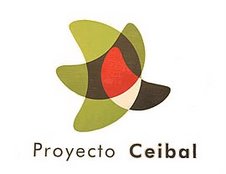Thoughts on the Bidding Process
(Translated by Alec McLure from Comentarios acerca del llamado a licitación 7/07/2007, published by Pablo Flores)
 In a previous post I did some initial commentary on the bidding process for Phase I of the Ceibal Project. I'm going to provide a more detailed summary here, now that I've had the chance to read the bidding document in more detail.
In a previous post I did some initial commentary on the bidding process for Phase I of the Ceibal Project. I'm going to provide a more detailed summary here, now that I've had the chance to read the bidding document in more detail.
First of all, one notices the enormous amount of work involved in considering a project of such complexity. This results in requiring projects proposals with a very wide scope. In this post, I'm only going to mention a few of the points that seem to me to embody the spirit of the call to bids, which doesn't mean that I'm not leaving many important aspects out.
Ceibal Project's Objectives
First, the bid document makes all the project's expected results very clear:
- Provide internet connectivity to 100% of school-age children both in their schools and in their homes.
- Put our country on the cutting edge as applies to the use of technology for the learning and formation process.
- Close the technology gap in regards to access to information and knowledge.
- Give access to culture, plurality, and opportunity without economic predetermination.
- Put Uruguay in place as the first country in the world with internet coverage over 100% of its territory and in the highest percentage of homes.
Proposal Requirements:
Three types of hardware must be included in the proposal: Notebooks, servers for the schools, and connectivity devices.
The Notebooks:
- Explicitly must be portable, lighweight, and resistent.
- Battery life must be 4 hours during "regular use"(navigation on a program that opens a new web page every 30 seconds). Currently I don't think that any of the candidates' prototypes meet this requirement.
- Must have integrated WiFi.
- The Operating System:
- Must be included in the notebook's price
- Takes into account its hard disk and memory usage
- It must be able to use its applications in stand-alone mode (i.e., must not need to be constantly connected to the web). This helps to mitigate the intellecutal property risks I was mentioning in a previous post .
- An integrated hardware security system is required which should deactivate the notebook if it's stolen.
- It asks for applications which can function in a collaborative way among the notebooks connected to the web.
- The camera, along with some other hardware and software components, are optional but mentioned as pluses in the proposal. By what I've seen in Cardal, the teachers get a lot out of the still and video cameras. I hope we don't lose that.
- Although optional, it's considered a plus to have "open and modifiable" software.
- An interesting detail is that they must have been made less than 120 days ago, thereby ensuring that if they make new models, they won't stick us with the leftover old ones. :)
- Install one or more for each school.
- Minimum storage capacity of 80 Gb. Daily incremental backup.
- Include web-content filtering software.
- Software and updates up to 2010 included in the price.
- Optionally, powerable by solar energy.
- Requests wireless coverage for the homes in the schools towns.
- Proposals must be developed taking into account three basic "model configurations" - schools with 150, 450, and 750 students.
- The schools in Villa Cardal, San Jacinto, and Sarandí Grande are proposed as connectivity testing sites before the proposal's delivery date. Successful testing there adds positive points towards adjudication.
The bid proposal also requests bids for technician training and equipment support. The equipment must have a warranty.
If a bidder, for strategic reasons, would like to somehow subsidize their offer, this must be explicitly indicated and the sums involved must be divulged.
Adjudication
The technical proposal counts for 60% of the final score, the economic proposal for the remaining 40%. The bid document indicates a wide range of factors that affect the score. In any case, it keeps options for further bidding processes or direct negotiation with the bidders open if it turns out to be convenient.
Timelines
- The bid refers to two phases: a first phase with 100,000 notebooks and a second phase (optional purchase) which adds on another 50,000. In any case, the bid asks for pricing on 5,000 notebooks, which opens the possibility of purchasing more from the winning bidder, if convenient.
- There is a set of shipping dates: October 1st, 2007, January 1st, 2008, April 1st, 2008, July 1st, 2008, October 1st, 2008, January 1st, 2009, April 1st, 2009, July 1st, 2009, October 1st, 2009. LATU - through its project commissions will set how many notebooks and servers will be requested in each case.
- It's not 100% clear when the first delivery will be, since both the proposal delivery date and the adjudication process can be delayed if it's considered convenient to do so.
Conclusions
- Bidders are required to provide proposals on complete solutions that deliver notebooks, servers, and connectivity to different types of population.
- LATU's flexibility to work in the private domain is used to advantage to encourage competition, thus obtaining a better price.
- It's clear that whoever wins this bid is well-positioned to continue with the whole project (that's to be expected - it wouldn't make sense for half the equipment to be of one type and the other half of a different type - unless expected results are not obtained.)
- Organizational tasks, educational proposals and a part of the techno-logistic tasks are reserved for the project's organization. For the rest of the tasks, my understanding is that expectations are that the winning bidder will become a participant in the project.



No comments:
Post a Comment